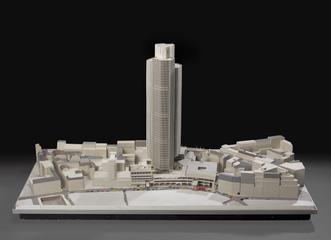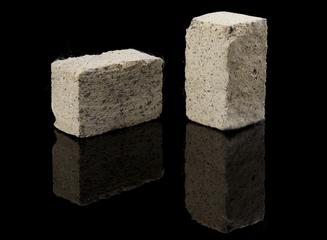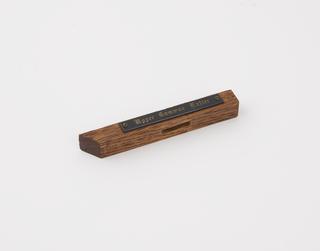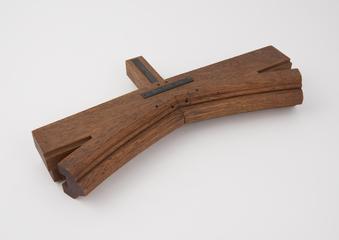

Red brick with indentation, also called ‘frog’, in the shape of a cross (9" x 4.5" x 2.5"), from St. Cross South Elmham, Suffolk, United Kingdom, 1801-1899
The majority of moulded or pressed bricks used for construction purposes have indentations on one surface. This 19th century brick from St. Cross South Elmham in Suffolk, United Kingdom, has one in the shape of a cross. Curiously, the indentations are commonly referred to as ‘frogs’. Why this is the case is not clear, but there are several competing theories. One suggests that ‘frog’ is the name for the indentations put in horses’ hooves, which was later also used for bricks. Two other theories claim that the term originates in the wooden bumps on brick moulds used to shape the indentations. While one assumes that the bumps had the shape of frogs, another one speculates that they were called ‘kickers’ because they kicked out the excess clay towards the edges. According to the theory, ‘kicker’ became interchanged with the Dutch word ‘kikker’, which translates to ‘frog’.
Regardless of their origin, brick frogs are useful for several reasons. Apart from providing space for their logo, they allowed the manufacturer to make more bricks with the same amount of clay but without decreasing size or quality. Additionally, they reduced the drying and firing time, made the bricks lighter and easier to grasp, and created extra space for the mortar, leading to a stronger bond between bricks.
Details
- Category:
- Building Construction
- Object Number:
- 1977-720
- Measurements:
-
overall: 66 x 232 x 110 mm
weight: 2.52kg
weight: 5.55568lbs
- type:
- bricks
- credit:
- Harley, L.S.




